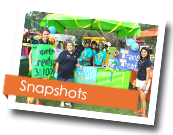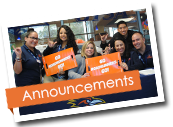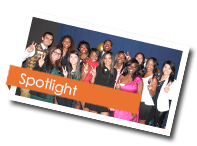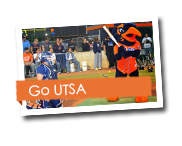

Reflection as Assessment
This month, we are highlighting the practice of reflection as an important and unique assessment tool. Thank you to Cristina Dominguez, Program Coordinator in the Inclusion and Community Engagement Center and Yvonne Pena, Assistant Dean of Students, for sharing this information.
In working with volunteer programs, you get used to hearing the word “reflection” a lot. We ask students to reflect after every service project, program, and event. Many times though, we are not just utilizing the “reflections” of these students for the purposes of improving or enhancing our programs. Reflection is the process by which students mentally and emotionally synthesize their service and learning experiences. Why not use the same reflection model to assess whether a program has met its outcomes?
The most common reflection model is the “What? So What? Now What?” model. Using the same concept of having students reflect on their experience, it can be adjusted to assess programs, events, and even organizations:
What? – The description phase
For programs and events:
• Talk about program or event. What happened? What did the students participate in?
After a conference:
• Talk about the conference. What sessions were attended? How were the speakers?
After a service project:
• Talk about the project. What did they do?
For student organizations:
• What is their organization about? What is the mission statement or founding principles?
So What? – The interpretive phase
For programs and events:
• What impact did this event/program have on you?
After a conference:
• What experiences did you have? How were you impacted by the sessions/speakers?
After a service project:
• How did the service project make you feel? Were you impacted by the agency’s mission and work?
For student organizations:
• How do you feel to be a part of your student organization? Are you proud?
Now What? – The action phase [Here, learning outcomes can be assessed to see if they were met.]
For programs and events:
• How has this program/event changed you? What will you do differently?
After a conference:
• How will you utilize what you learned? How will you influence others?
After a service project:
• How are you changed from this service project? What will you do next?
For student organizations:
• How have you been changed by your organization and how will you change/challenge others?
Ideally, it is recommended you gather information from the participants shortly after the event/program in an effort to ensure timely feedback. We have learned that calling these gatherings “receptions” or “reunions” yields a better turn out than calling them “focus groups.” Students are eager to share their experiences; we just need to make sure we are asking the right questions and creating the right environment in order to receive the most useful feedback. We hope this model will be useful to you as another way to not only gather feedback but see evidence of student learning, as well.
See you next month!
Kasey

Kasey Neece-Fielder
Director of Strategic Planning and Assessment
Office of the Vice President for Student Affairs
kasey.neece-fielder@utsa.edu
http://utsa.edu/students/assessment/













